Are you an introvert, extrovert, or ambivert? Has anyone in your office ever asked which personality trait you identify with more? There is a case for acknowledging and implementing design solutions that address varying personality types – that effectively complement job functionality, productivity, and employee satisfaction. As a bit of a self-proclaimed ambivert, I find myself exploring the follow topics in great depth when thinking of workplace design:
- Designing workplaces for introverts
- Collaboration is not one size fits all
- Human connection
Designing The Workplace For Introverts
I’d like to start by addressing the importance of designing workplaces for introverts – because we all have those times where we’d like to not be on display or overheard by our colleagues while working through a difficult phone call. The solution here is having choice in where you take that potentially embarrassing call. For those that don’t necessarily identify as introverts, but can relate to the previous sentences, I think it is crucial to understand that introverts react to stimulation on a greater scale than is generally understood. Introverts need a sense of psychological comfort, which in this context can mean a real sense of privacy – places where they can’t be seen or heard by those around them. Essentially they do not care to constantly be “on display” as the open office tends to impose. Constant exposure to distractions, unwanted noises, coworker interruption…etc, can utterly drain an introverts energy and, thus, their productivity and any shot at feeling ultimately satisfied with their work life. They need freedom from interruption. In short, designing the workplace for introverts involves the inclusion of truly private spaces where they can get away from distraction, into a space where they feel most at ease and can put full focus into their tasks.
Collaboration Is Not One Size Fits All
As an ambivert I see the benefits to designing open office environments that encourage collaboration. There are benefits to open visibility to your team members, the ability to show others your work in progress, and the uninterrupted, collaborative flow of creativity that can happen from bouncing ideas off one other as they come. To the introversion perspective, collaboration holds different meaning. Bullpens work for gregarious extroverts that give each other energy through constant interaction. Introverts, however, prefer to collaborate with others in a more task-oriented way. A calmer setting, free from what otherwise does not contribute to completing or making progress on a specific task. This type of almost “head’s down” collaboration requires private collaborative spaces that differ from your typical huddle area or booth-type area tucked in the corner of the office – where you can still hear the exchange of jokes, stories, and high fives from the bullpen. This design will typically include acoustic treatment and shy away from the typical “corporate” aesthetic.
Human Connection
There is much to be said to this statement in regards to the workplace. I will touch on the aspect that we all work differently and have varying things we deem “needs” that we’d like met by our employers. Although it isn’t explicitly the job of employers to make sure each and every person gets exactly what they want from an office, putting sincere thought into employees tends to have major positive impact in how that company performs, their reputation in the marketplace, and their culture. Good news: thoughtful workplace design can help. Throughout any day, we all experience varying levels of energy that directly impact our productivity. We all have fluctuations in how much social stimulation we crave. We have times when we want to share an awesome story with a group. We have times when we want to share something private with one person. Sometimes we don’t mind contributing to the office buzz while simultaneously working, and other times we just need to seclude ourselves to get something done. Understanding our human tendencies in personality traits, and considering them when designing the workplace, can only aide in creating an attractive, healthy company that exudes success from the inside out.
To the term “human connection”, I’ll leave you with the following idea: The currency of getting to know someone well is that you’re sharing information with them that you might not share with everybody else around you. If everyone can constantly hear everything you have to say, there is much less opportunity to create and build human connection.

